-
New Zealand quake could take ten years and $15 billion to clean up
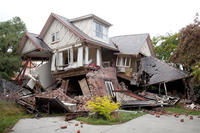
David Carter, New Zealand’s acting economic development minister, estimates that it could take ten years to rebuild Christchurch after a 6.3 magnitude earthquake rocked the town last month; the cost of rebuilding is estimated at $15 billion and climbing; nearly a third of the buildings in its business district have been declared unsafe; New Zealand prime minister John Key ruled out an earthquake tax for fear it would hurt the economy, which has been hit hard by the recession; New Zealand is actively soliciting international aid to help with its recovery; Christchurch has a population of roughly 377,000 and makes up about 15 percent of the nation’s economy
-
-
Britain struggles to contain rampant copper thefts
Britain is struggling to stop thieves that are stealing large quantities of copper from rail yards; the cost of these thefts to the British government has doubled to roughly $1.25 billion a year; the price of copper has hit all-time highs at just over $10,000 per ton, which has driven organized gangs to conduct dangerous raids on rail way stations; the gangs climb on to the tracks and use power tools to cut down all the copper cables they can including train signaling, electricity, and data cables; thefts are expected to increase as the demand from China is projected to push copper prices even higher
-
-
Growth of geothermal energy market lags behind wind and solar
According to a recently released report, the geothermal energy market is expected to grow over the next twenty years, but will still trail far behind wind and solar; currently only twenty-six countries in the world use geothermal energy to generate power, and as of 2010 there was a total global capacity of 10,715 megawatts; in June 2010, total global capacity of wind-powered generators was 175 gigawatts; by 2020 as much as 14.4 gigawatts of new geothermal capacity will be added at a 3 percent annual growth rate; the market value is estimated to be $6.8 billion by 2020; the expansion of geothermal energy still faces several impediments; at least 350 projects currently underway face financing, drilling rig, and skilled labor shortages
-
-
Toxic metals from Superfund site endangers wetlands in Ventura County
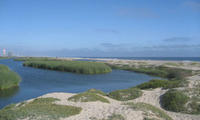
The Environmental Protection Agency (EPA) recently announced that an old metal recycling plant in Oxnard, California, now a federal Superfund site, was leaking lead, zinc, and other dangerous chemicals into nearby wetlands; when the plant closed, it left nearly 700,000 cubic yards of unattended waste laden with heavy metals and small amounts of radioactive thorium; high costs have hindered cleanup efforts and local residents have become frustrated with the drawn out efforts; the wetlands that are endangered by the old metal recycling plant are located in Ormand Beach and are home to several rare and endangered species
-
-
Scientists warn solar storms could be "global Hurricane Katrina"
Scientists warn that massive solar storms could be the equivalent of a “global Hurricane Katrina”; these storms could cause $2 trillion in damages to communications equipment, power grids, and GPS systems; experts are particularly concerned about solar flares due to the increased reliance on electrical communication systems and the approach of a period of intense solar activity; solar flares can cause power surges that are powerful enough to knock out electrical grids and induce electric currents in oil pipelines; in 2013 the sun will enter a peak in its eleven year solar cycle that is expected to generate a significant number of powerful solar flares; last month a solar flare generated magnetic storms and power surges that disrupted communications and grounded flights
-
-
Radioactive waste contaminates drinking water, EPA does nothing
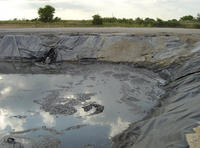
Recent Environmental Protection Agency (EPA) documents show that Pennsylvania’s drinking water has been contaminated with radioactive waste from natural gas drilling; energy companies have been extracting natural gas with a new drilling technique called “hydrofracking”; this process results in millions of gallons of wastewater that is contaminated with dangerous chemicals like highly corrosive salts, carcinogens, and radioactive elements; EPA documents reveal the process has been contaminating drinking water supplies across the country with radioactive waste; in Pennsylvania more than 1.3 billion gallons of radioactive wastewater was trucked to plants that could not process out the toxins before it released the water into drinking supplies
-
-
Building codes increasingly unable to withstand extreme weather
Basic infrastructure around the world has had increasing difficulty in withstanding more extreme weather patterns; with record snow falls in the Northeastern United States, hundreds of roofs have collapsed under the weight of snow and in 2008 heavy snows in China caused 223,000 homes to collapse resulting in $1 billion in insured damages; engineers and insurers worry that current building designs may not be able to withstand more extreme weather patterns; engineers have built more robust safety mechanisms into their designs, but municipal building codes that determine the minimum standard have lagged behind; insurance companies have changed their policies to offer lower premiums to homes that are better built and have refused to insure homes in high-risk areas
-
-
Magnetic battery to monitor buried nuke waste for 100 years
There is a new way to monitor deeply buried nuclear waste: University of Bristol researchers have developed a “battery” that uses a magnetic spring to create the necessary power to send a message from a repository to the outside world 100 years on; Doug Parr, chief scientist at Greenpeace in the United Kingdom, is unimpressed. “Spent fuel remains hazardous for 240,000 years. It’s good to see there’s a possibility of monitoring for the first 100 years — that just leaves the other 99.96% of the time to worry about”
-
-
Maryland wants Florida's high speed rail funds
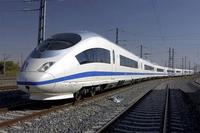
As Republican governors in Florida, Wisconsin, and Ohio reject federal funding for high speed rail projects, states like Maryland are clamoring to receive those funds; Maryland Senators Benjamin L. Cardin and Barbara A. Mikulski sent a letter to Transportation Secretary Ray LaHood requesting that $2.4 billion dollars in high speed rail funding originally designated for Florida be redirected to projects in the Northeast Corridor; each year 250 million rail passengers use the corridor and passenger use is projected to increase by 60 percent by 2030; the White House plans to spend $53 billion on high speed rail projects over the next six years and $8 billion in the coming fiscal year alone
-
-
Thorium could be answer to South Africa's energy woes
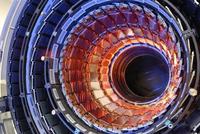
South African scientists are increasingly touting thorium as a viable solution for the country’s energy woes; scientists believe that South Africa could use its plentiful reserves of thorium, a radioactive rare earth metal, to generate greenhouse gas-free electricity; South Africa’s aging energy infrastructure has led to rolling blackouts and energy rations; South Africa currently generates 78 percent of its energy from coal making it one of the largest contributors of greenhouse gases in the world; thorium is a better alternative to uranium in nuclear power production as it cannot be weaponized, does not need to be converted or enriched, its radioactive waste breaks down faster, and is less expensive and environmentally friendlier to extract
-
-
Aging U.S. natural gas pipelines are ticking time bombs
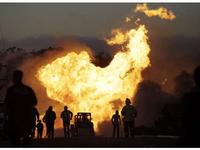
Fourteen people are dead, dozens injured and entire neighborhoods are gone in the wake of three massive gas pipeline explosions in San Bruno, California; Philadelphia and Allentown, Pennsylvania, over the past six months; more than 2,800 significant gas pipeline accidents have been recorded across the United States since 1990 — a third of them causing deaths and significant injuries; there are more than 210 natural gas pipeline systems, made of cast iron, steel, and plastic with more than 21,000 miles running through heavily populated areas
-
-
China plans to build alternative to Panama Canal
China recently struck a deal with Colombia to build a railway system that would connect the Atlantic to the Pacific oceans; China hopes this link will create a viable alternative to the Panama Canal; the railway would help ease China’s growing demand for raw materials, particularly coal, and act as an additional outlet for Chinese exports; Colombia is the fifth largest coal producer in the world, but most of its coal is exported through its ports on the Atlantic side; trade between China and Colombia has skyrocketed from $10 million in 1980 to $5 billion in 2010
-
-
China races to claim Arctic resources
As temperatures around the world continue to rise and the ice in the Arctic Ocean melts, the once frozen seas are increasingly open for exploration and countries have been scrambling to claim the region’s vast resources; several countries including Canada, the United States, and Russia have all sought to expand their territorial claims over the region and now new countries like China are pushing in; Chinese researchers recently sailed to within 120 nautical miles of the North Pole; only a few years prior, this trip would have been impossible due to the thick ice in the ocean that can be more than 30 feet thick; scientists estimate that during the summer months, the Arctic Ocean could be ice-free by as early as 2013 or as late as 2060
-
-
In a setback, Iran unloads nuclear fuel from Busheher reactor
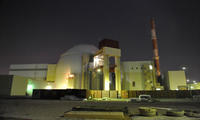
Iran announced Saturday it was unloading nuclear fuel from the Bushehr reactor, signaling more problems for the Russian-built plant after decades of delay; a source close to the project said the fuel was being unloaded on the suspicion that metal particles from nearly 30-year old equipment used in the construction of reactor core had contaminated the fuel; a senior Iranian official said earlier this month that suggestions should be investigated that the Stuxnet computer worm, believed to have been an attempt by Iran’s enemies to sabotage the nuclear program, had caused harm to the 1,000 megawatt Bushehr reactor
-
-
Contradictions in U.S. cybersecurity policy
The United States wants a secure cyberspace, but its intelligence agencies have found enormous utility in using their own computer hacking capabilities to collect confidential information from foreign adversaries; this raises the question of how the U.S. government can push for global cybersecurity while at the same time using cyber means to collect intelligence on potentially threatening regimes such as Iran
-
More headlines
The long view
Falling Space Debris: How High Is the Risk I'll Get Hit?
An International Space Station battery fell back to Earth and, luckily, splashed down harmlessly in the Atlantic. Should we have worried? Space debris reenters our atmosphere every week.
Using Drone Swarms to Fight Forest Fires
Forest fires are becoming increasingly catastrophic across the world, accelerated by climate change. Researchers are using multiple swarms of drones to tackle natural disasters like forest fires.
Strengthening the Grid’s ‘Backbone’ with Hydropower
Argonne-led studies investigate how hydropower could help add more clean energy to the grid, how it generates value as grids add more renewable energy, and how liner technology can improve hydropower efficiency.
LNG Exports Have Had No Impact on Domestic Energy Costs: Analysis
U.S. liquified natural gas (LNG) exports have not had any sustained and significant direct impact on U.S. natural gas prices and have, in fact, spurred production and productivity gains, which contribute to downward pressure on domestic prices.
